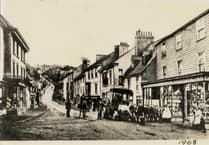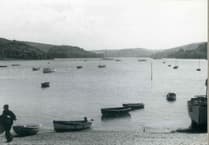A PROJECT to install green, money-saving solar panels on roofs in an industrial estate is coming to life after an event took place to engage businesses and property owners.
South Dartmoor Community Energy hosted the event at the Westward Inn to tell people about the Lee Mill Solar Roof Project, which promises benefits for businesses, local people and the environment.
Through the project, made possible by a grant from the Rural Community Energy Fund and run by SDCE, a number of buildings in Lee Mill Industrial Estate are to see solar photovoltaic panels installed on roofs.
Installation costs will be covered by SDCE through a community share offer, while any profits will be put into a fund available for other local sustainability initiatives.
SDCE, a not for profit community benefit society, is now on the search for owners of suitable roofs. It will carry out a feasibility study looking at factors like orientation and energy use before making a final decision for each building proposed.
The scheme works by selling the energy produced to the building’s occupier at a much cheaper rate than they would otherwise pay. The substantial drop in the ’feed-in tariff’ paid to homes and businesses that generate their own electricity has meant this now makes more financial sense than selling power to the grid.
SDCE director Sophie Phillips explained Lee Mill had great potential, with around 50 south facing roofs on the estate. A number of businesses had expressed an interest, although the situation was made more complex by many companies being tenants, not owning their premises.
Jake Burnyeat from Communities for Renewables was on hand at the event to help explain the scheme. He said: ’We get involved with community energy societies like SDCE, and help them find sites and raise funding.
’The business model for this kind of scheme has changed. Because the FIT has reduced, the income stream is now more dependent on selling cheaper energy to the business. The FIT has been reduced by ten times since its peak in 2011, when it was 43p per kwh.
’The building’s occupiers would get energy for around a third less than usual, but the biggest benefit is that surplus profit generated goes into a community fund for local projects.’
Alastair Gets from Totnes company Argand Solutions explained that on occasion, the physical infrastructure also limited how much energy could be exported to the grid. He said: ’Getting a good enough connection is a new problem that’s starting to occur. It’s getting harder to get new connections, and there’s much less spare capacity because of the amount of renewable generation we have now.’
However Gareth Walton of Exeter’s SunGift Energy said: ’Luckily most industrial estates do have good connections.
’At Lee Mill you’ve got lots of big roofs, lots of south facing roofs, and lots of high energy use businesses.’
And he noted: ’There are big changes in the way energy is being generated in the UK - 40 per cent of the energy used on Christmas Day came from renewables.’
For more information please visit www.southdartmoorcommunityenergy.org, or call Sophie on 07709 0220250.





This article has no comments yet. Be the first to leave a comment.